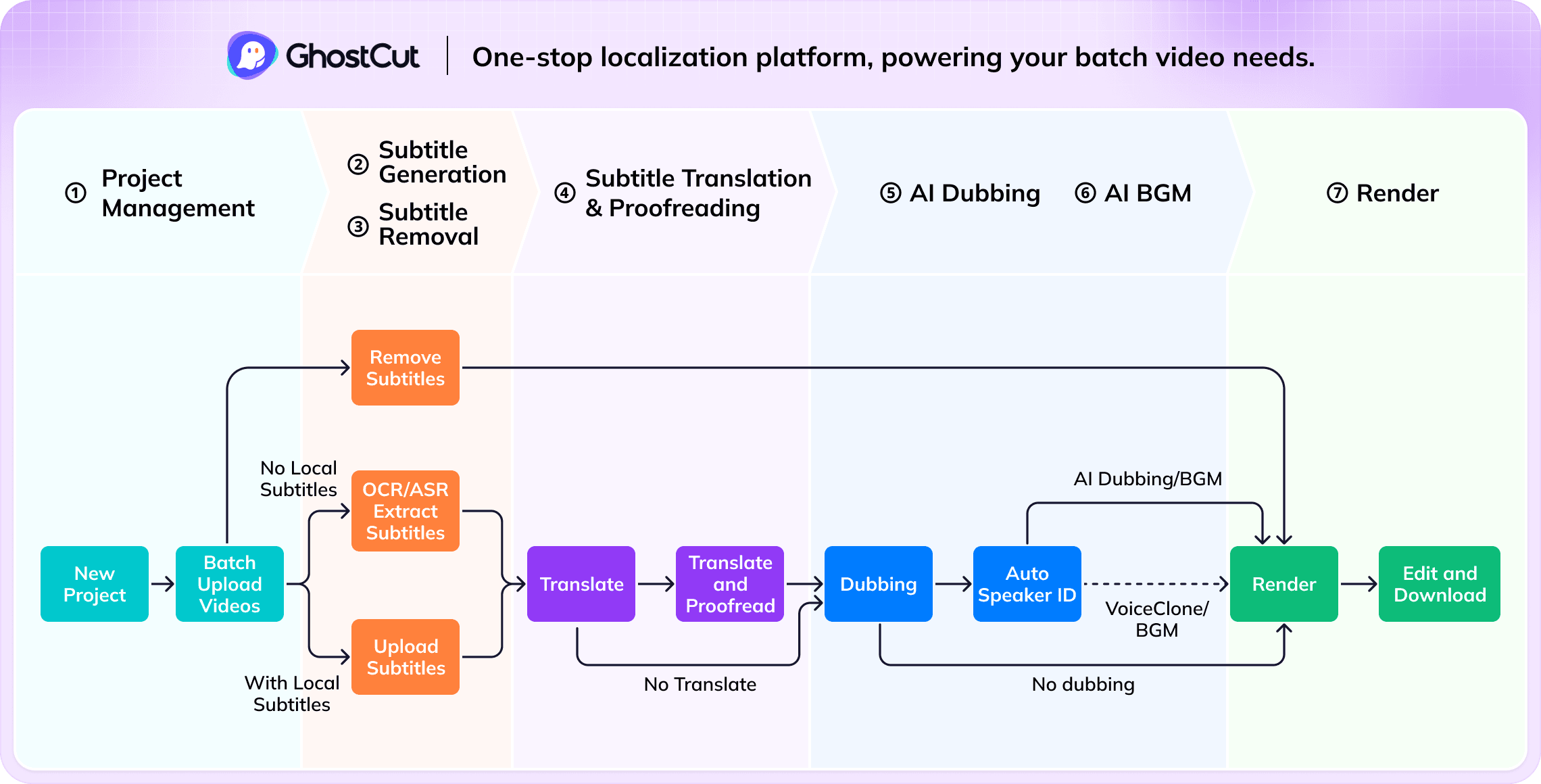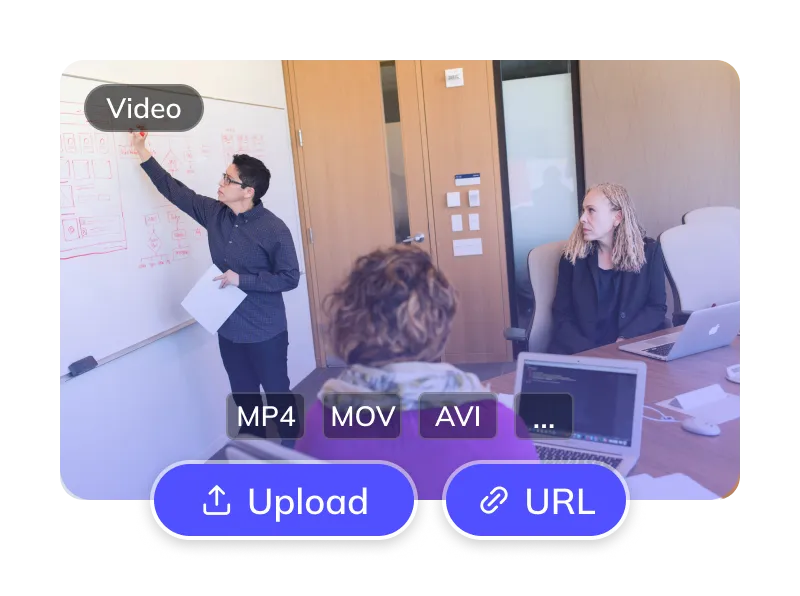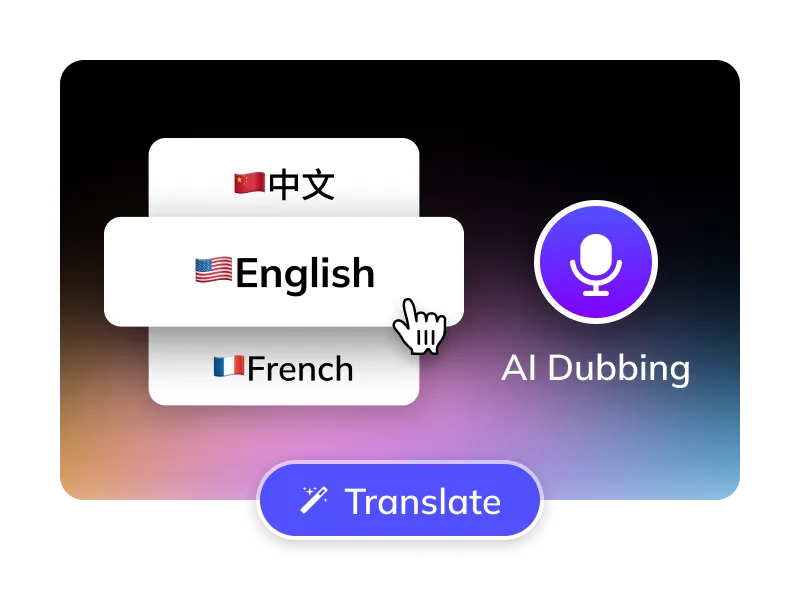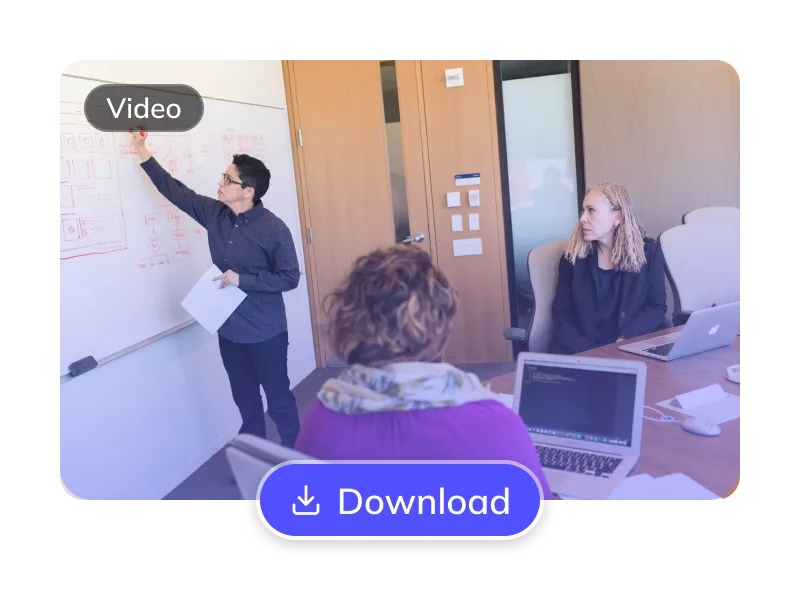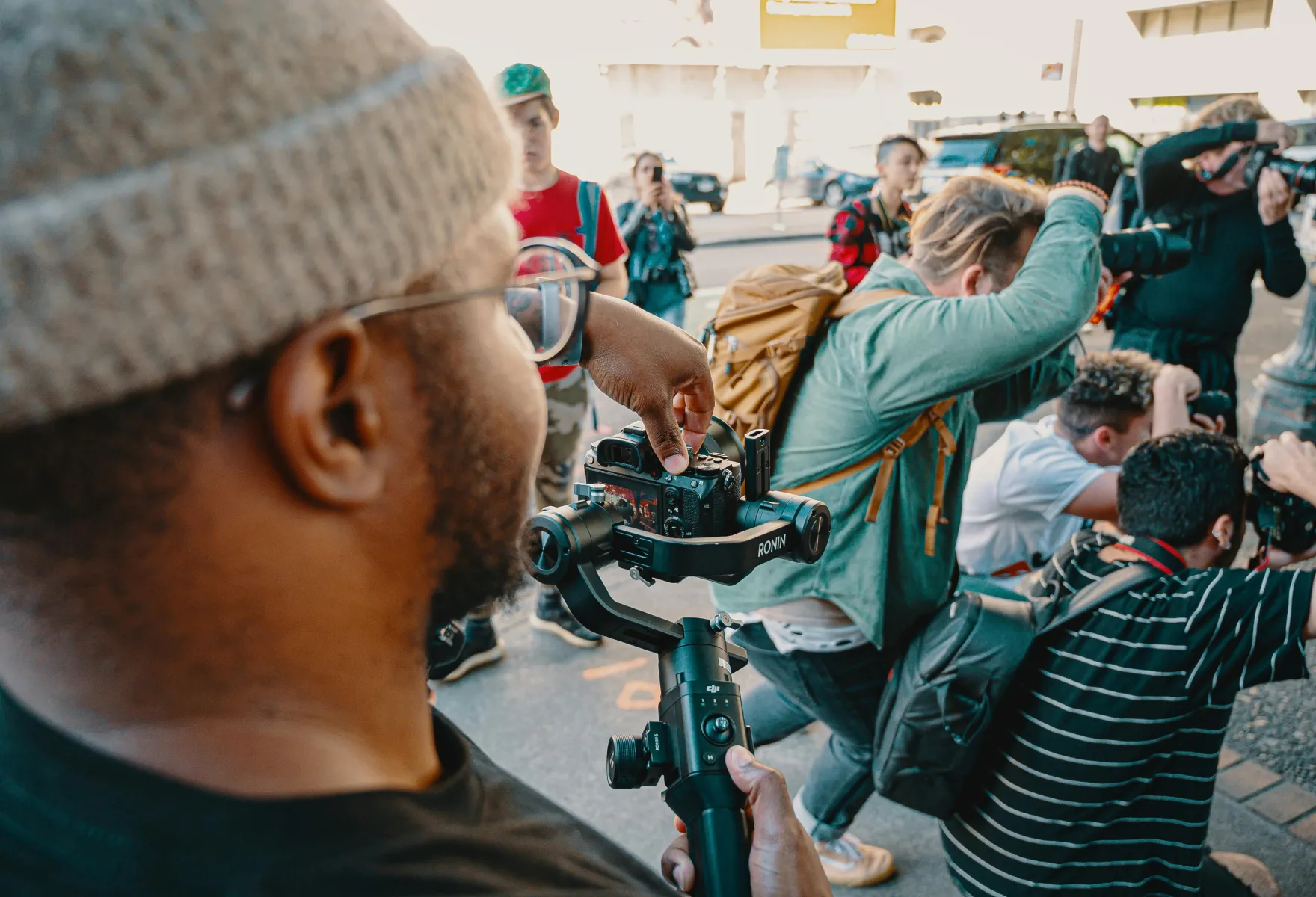How to Translate German Videos to English ?
Translate German Videos to Japanese in 3 Easy Steps
Trusted by 1,500,000+ Global Creators and Businesses
Why GhostCut for Your Video Translations?
GhostCut is your all-in-one AI solution for translating German content into natural, engaging Japanese.
Effortless Project Management
Manage German assets, subtitles, & Japanese videos. Batch process projects efficiently.
Pinpoint Japanese Accuracy
Up to 99.5% accurate. Optimized for German-to-Japanese with LLM calibration & multi-agent review for culturally fluent Japanese translations.
Lifelike Japanese AI Dubbing
Choose from diverse, human-like Japanese AI voices (US/UK accents). Emotion-cloning technology captures original tone for natural Japanese delivery.
Flexible German Subtitle Options
Optionally erase original German hardsubs for a clean slate. Translate embedded German subtitles directly.
Smart Multi-Speaker ID (German)
AI detects multiple speakers in German videos. Assign or clone distinct Japanese voices per character, with cross-episode consistency for complex Japanese dubs (dramas, interviews).
Efficient Batch Processing & API
Batch translate and dub 100s of German videos to Japanese at once. Seamlessly integrate with our robust API.
Versatile BGM Control
Keep or mute original BGM. Our unique tech can also isolate sound effects, meeting diverse copyright and distribution needs.
Unbeatable Value
Flexible German-to-Japanese plans. Try core features free. Automated pro service from just $0.1/minute.
Easy Online Access
No downloads. Instantly translate German videos to Japanese online. Works on Windows, Mac, & major mobile browsers for cloud processing anywhere.
The GhostCut Edge: Unmatched Accuracy, Speed, and Value.
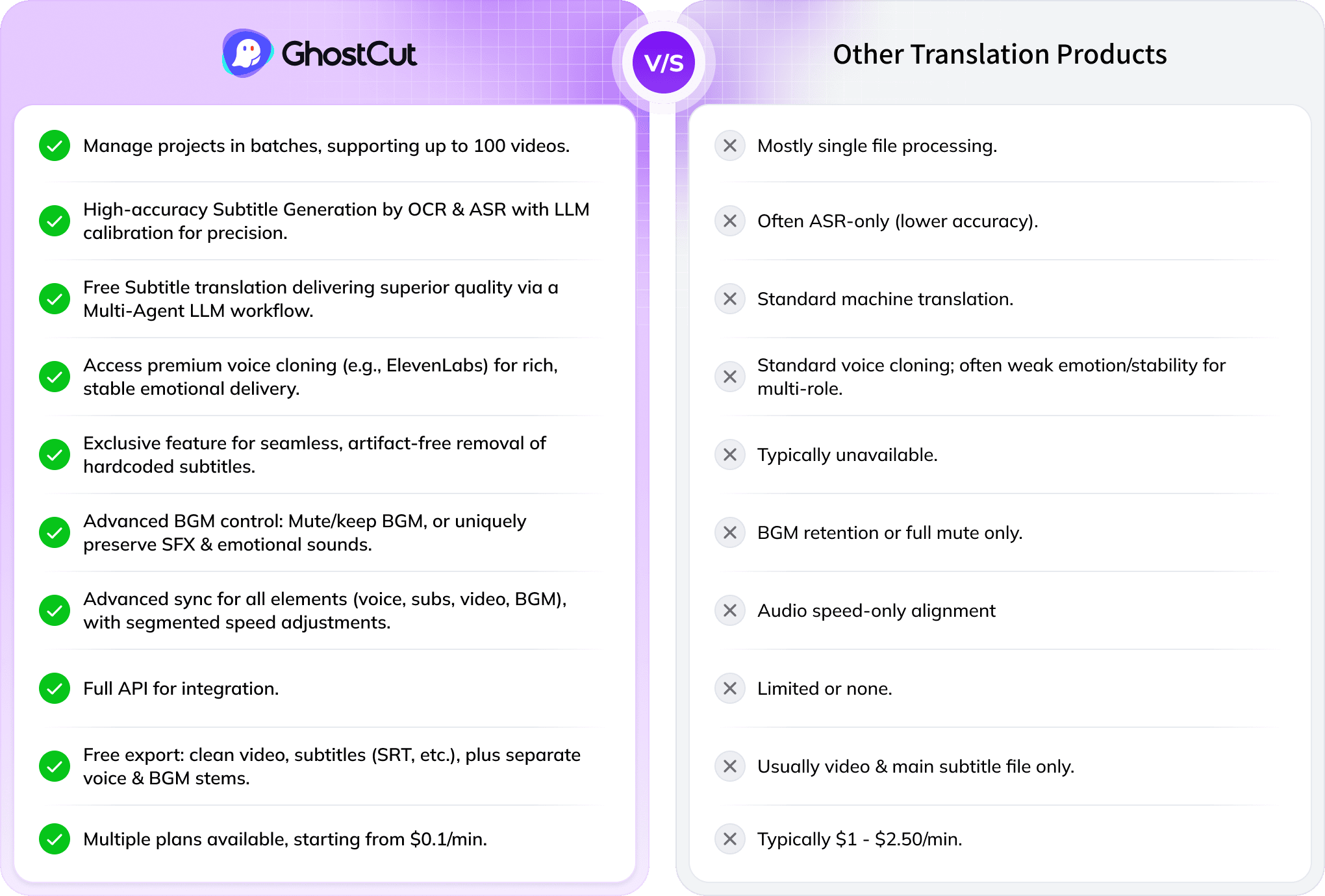
Every Algorithmic Optimization, Engineered for Quality Japanese Video
Mastering Long-Form German Drama & Multi-Character Dubbing
Translating a 100-minute German drama with 4000+ lines and many characters into Japanese is tough. Standard AI struggles to tell speakers apart, causing errors. GhostCut’s multi-modal AI (video, voice, text) excels in long-form, multi-speaker content, ensuring accurate, consistent character voices across entire series.
Translate Now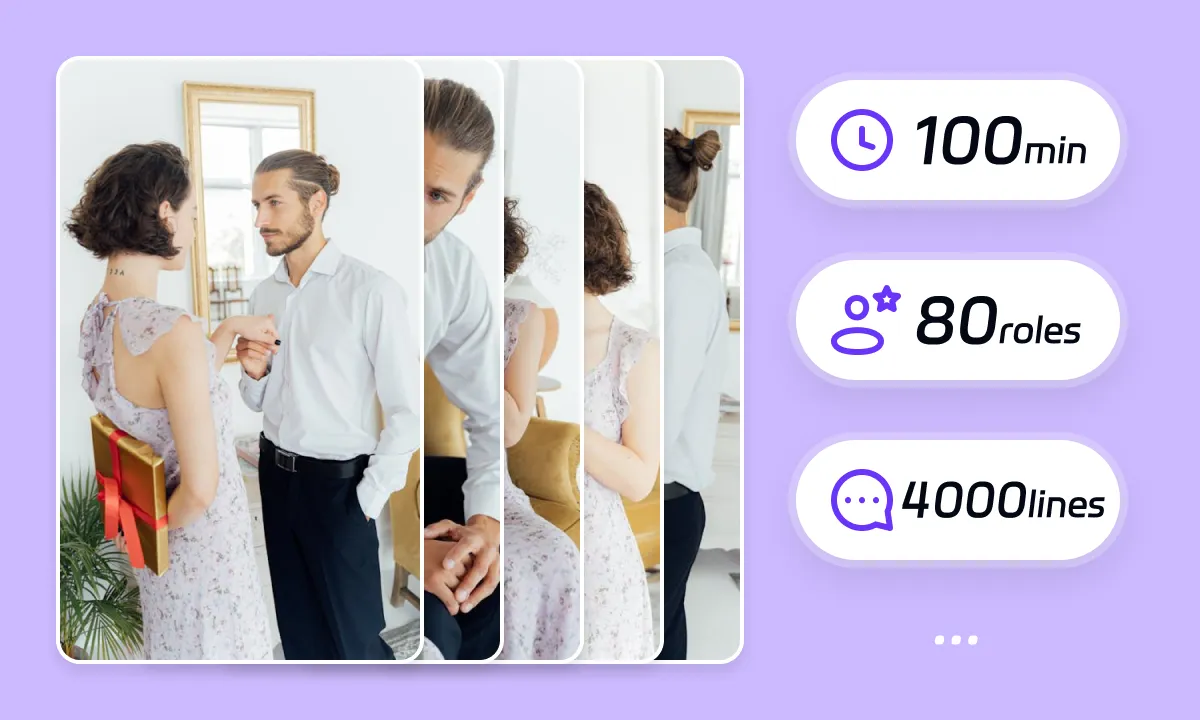
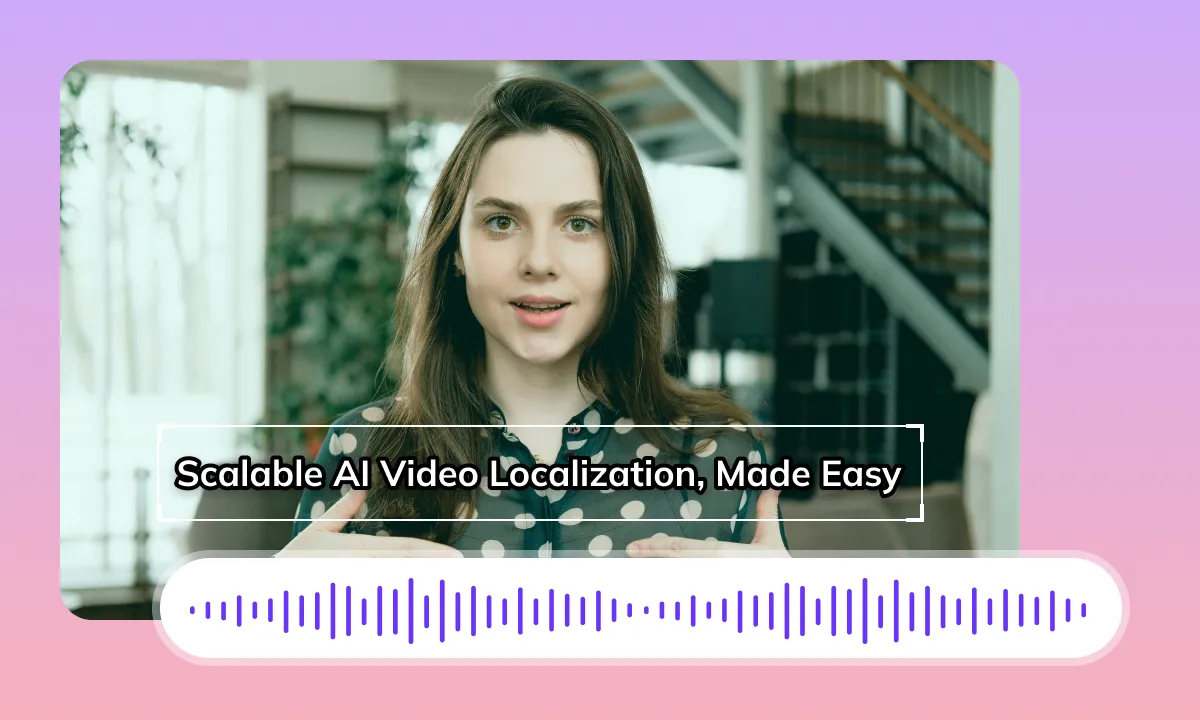
Seamless Japanese Dubbing & Perfect Lip-Sync
GhostCut ensures natural Japanese audio flow by treating related subtitles as whole ideas for TTS. It then precisely times new Japanese subtitles. Since German-to-Japanese translation can change speech length, our AI expertly adjusts the new Japanese audio, subtitles, video, and BGM to maintain perfect sync, just like a seasoned editor.
Translate NowBoost ROI with Flawless German Subtitle Removal
Original German hardsubs can limit your video's global appeal. GhostCut’s AI doesn't just blur; it intelligently reconstructs the background obscured by German subtitles, even complex ones, for a perfectly clean, high-quality visual. This means better viewer engagement, longer watch times, and higher ROI.
Translate Now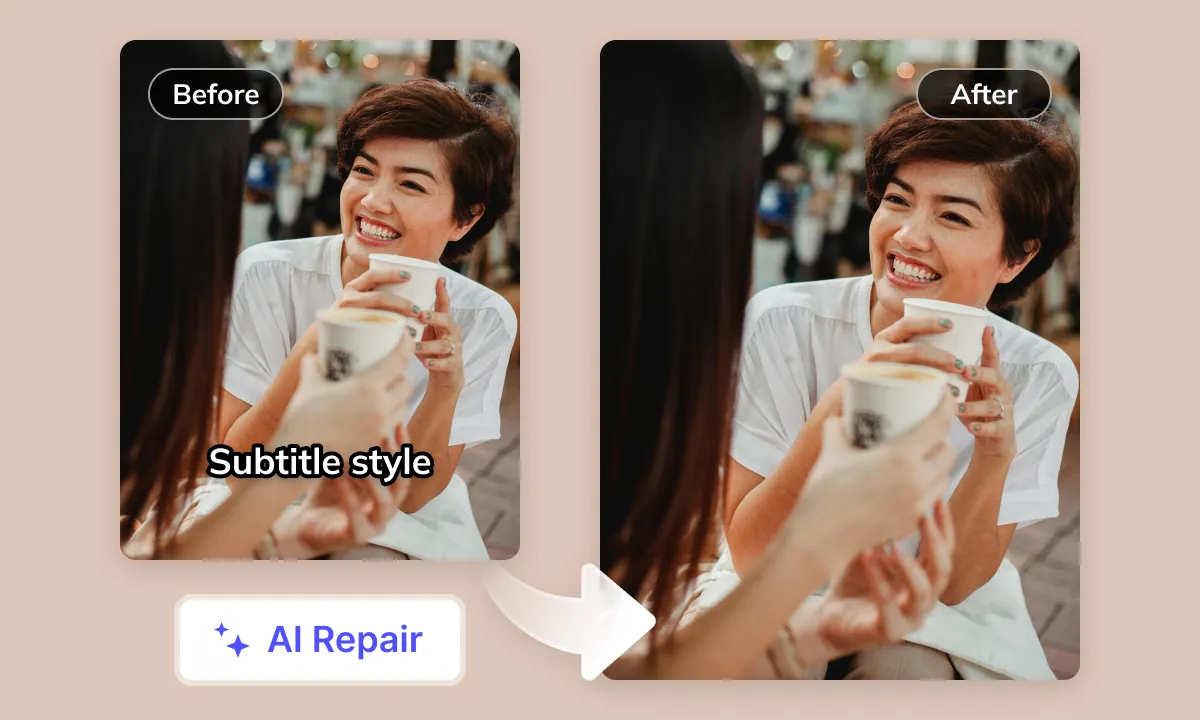
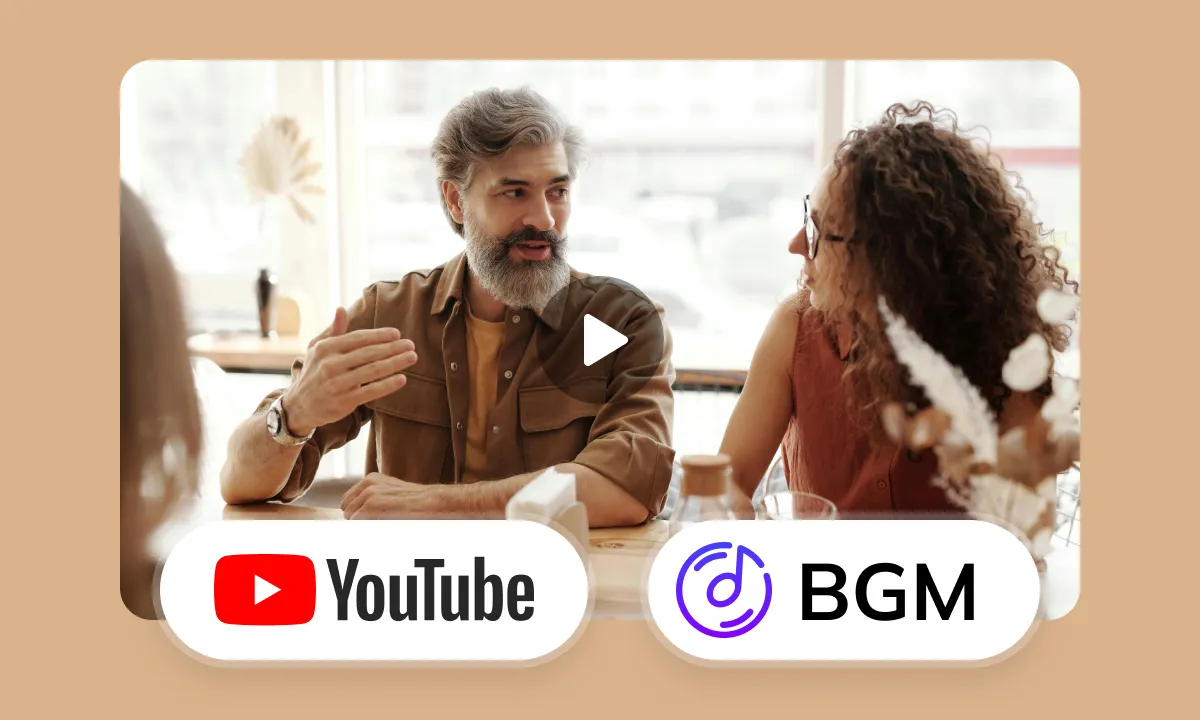
Smart Audio Control for YouTube Creators
Navigating BGM copyright on YouTube is tricky. GhostCut’s advanced audio separation isolates German dialogue for translation, while intelligently managing BGM, sound effects, and even emotional expressions. Our "Keep SFX, Remove Music" option is a creator favorite for avoiding copyright issues without losing your video’s impact.
Translate NowReach a Wider Japanese Market with Your German Videos
German video content struggles to effectively reach interested Japanese viewers due to language barriers. On international platforms like YouTube, many great German videos lack high-quality Japanese translation and voiceover. This makes comprehension difficult for Japanese users, greatly weakening the viewing experience, user interaction, and international potential. The market urgently needs a professional, efficient German-to-Japanese AI video translation and voiceover solution
German to Japanese Video Translation: Insights and Challenges
Linguistic Structure Cultural Divide
German and Japanese diverge significantly in grammar, vocabulary, expression, and cultural nuances. German's complex sentence structures, declensions, and conjugations contrast sharply with Japanese particles, verb conjugations, and honorifics. A core challenge is accurately conveying German's precision into Japanese's subtlety, while handling cultural references and idioms, as literal translation often fails to capture the original essence or leads to misunderstanding
Writing Systems Subtitle Display
German uses the Latin alphabet, while Japanese employs a mix of Kanji, Hiragana, and Katakana. When translating to Japanese subtitles, visual density and layout space must be considered. Japanese characters typically occupy more space than German letters. The technical challenge lies in clearly and smoothly presenting information within limited screen real estate, ensuring proper line breaks, and controlling character count per line
Pacing Audio-Visual Sync
Spoken German can be information-dense with longer sentences, while Japanese may have different pacing and rhythm for conveying the same concept. In video translation, it's crucial to manage German audio length and pauses, naturally adapting them to the Japanese voice-over or subtitle timeline. This ensures audio-visual synchronization, preventing subtitles from flashing too quickly or voice-overs from being out of sync with the visuals
German Speech Recognition Challenges
German pronunciation varies regionally and includes diverse accents. Furthermore, video content may feature multi-speaker dialogue, background noise, or non-standard pronunciation, all of which can impact the accuracy of Automatic Speech Recognition (ASR). Accurate source language recognition is fundamental for subsequent high-quality translation
Japanese AI Voice Emotional Nuance
While Japanese AI voice-over technology has advanced, it still falls short in emotional expression, intonation variations, and character differentiation. Generating natural, engaging Japanese AI voices that suit various character roles, especially when conveying subtle emotions or different levels of politeness, remains a significant challenge
Lip-Sync Precision Requirements
German and Japanese pronunciations involve significant differences in lip movements. To achieve a more natural viewing experience during Japanese voice-over, it's essential to match the original video characters' lip movements as closely as possible. This demands extremely high lip-sync precision from automated voice-over technology
Top-Tier AI Video Translation Standards
Ideal German to Japanese AI video translation should achieve: highly accurate German speech recognition - authentic Japanese translation that considers linguistic structure, cultural differences, and context - emotionally rich, naturally intonated Japanese AI voice-over - precise lip-sync and automated audio-visualsubtitle alignment
Tackling Video Translation Challenges with AI Empowering your German content for any worldwide scenario.
Your All-in-One AI Translation Studio
GhostCut offers more than just German-to-Japanese translation. It's a complete AI-powered workflow: subtitle extraction 、 removal 、 translation and proofreading to multi-character dubbing , BGM processing, and final rendering. Go from German source to global-ready videos, effortlessly.
